Der beste Weg, Lithium-Golfwagenbatterien effektiv aufzuladen
Der beste Weg, Lithium-Golfwagenbatterien effektiv aufzuladen
Das richtige Laden von Lithium-Golfwagenbatterien ist entscheidend für eine längere Batterielebensdauer, maximale Leistung und die ständige Einsatzbereitschaft Ihres Golfwagens. Mit der zunehmenden Umstellung von Blei-Säure- auf Lithium-Technologie ist es wichtiger denn je, das richtige Laden dieser Batterien zu verstehen. In diesem Leitfaden erläutern wir Best Practices, wichtige Sicherheitstipps, die Auswahl des Ladegeräts und Wartungsstrategien, damit Sie Golfwagenbatterien effizient und effektiv laden können.
- Warum das Laden von Lithium-Golfwagenbatterien anders ist
- Auswahl des richtigen Ladegeräts für Lithium-Golfwagenbatterien
- Best Practices zum Laden von Lithium-Golfwagenbatterien
- Ladeumgebung und Einrichtung für Golfwagenbatterien
- Wie lange dauert das Aufladen von Lithium-Golfwagenbatterien?
- Vermeiden Sie diese häufigen Ladefehler bei Golfwagenbatterien
- Aufbewahrungstipps für Lithium-Golfwagenbatterien
- Überlegungen zum saisonalen Laden von Golfwagenbatterien
- So erkennen Sie, ob die Batterien Ihres Golfwagens vollständig geladen sind
- Fehlerbehebung bei Ladeproblemen mit Golfwagenbatterien
- Laden mehrerer Lithium-Golfwagenbatterien in Reihe
- Vorteile der richtigen Ladepraktiken für Golfwagenbatterien
- Vergleich der Ladevorgänge für verschiedene Arten von Golfwagenbatterien
Warum das Laden von Lithium-Golfwagenbatterien anders ist
Die Chemie von Lithium verstehen
Lithium-Ionen-Batterien, die in Golfwagen verwendet werden, basieren typischerweise auf der chemischen Zusammensetzung LiFePO₄( Lithiumeisenphosphat). Diese Batterien bieten eine längere Lebensdauer, schnellere Ladezeiten, ein geringeres Gewicht und eine bessere Effizienz als herkömmliche Blei-Säure-Batterien.
Wesentliche Unterschiede zu Blei-Säure-Batterien
- Kein Sulfatierungsrisiko
- Höhere nutzbare Kapazität
- Flacher Spannungsverlauf
- Kein Ausgleichen oder Nachfüllen von Wasser erforderlich
Diese Unterschiede bedeuten, dass Golfwagenbatterien mit Lithium unterschiedliche Ladestrategien für eine optimale Leistung erfordern.
Auswahl des richtigen Ladegeräts für Lithium-Golfwagenbatterien
Warum ein Lithium-spezifisches Ladegerät wichtig ist
Die Verwendung eines für Blei-Säure-Batterien entwickelten Ladegeräts für Lithium- Golfwagenbatterien kann zu Unter- oder Überladung führen, was Leistung und Lebensdauer verringert. Ein geeignetes Lithium-Ladegerät bietet:
- Ein Ladeprofil mit konstantem Strom/konstanter Spannung (CC/CV)
- FürLiFePO₄ geeignete Spannungsgrenzen (typischerweise etwa 58,4 V für eine 48-V-Batterie)
- Automatische Abschaltung nach vollständiger Ladung
Kompatibilität von Ladegerätspannung und Stromstärke
Stellen Sie sicher, dass Ihr Ladegerät sowohl der Spannung als auch der Amperestundenzahl Ihres Akkupacks entspricht. Zu leistungsstarke Ladegeräte können zu Überhitzung führen, während zu schwache Ladegeräte die Akkus möglicherweise nicht vollständig aufladen.
>>Siehe auch: Anleitung zur Auswahl der besten Lithium-Golfwagenbatterie
Best Practices zum Laden von Lithium-Golfwagenbatterien
Nach jedem Gebrauch aufladen
Lithium- Golfwagenbatterien funktionieren am besten, wenn sie häufig geladen werden. Im Gegensatz zu Blei-Säure-Batterien leiden sie nicht unter dem Memory-Effekt und müssen vor dem Laden nicht vollständig entladen werden.
- Tun : Nach jedem Gebrauch einstecken, auch wenn nur teilweise entladen
- Nicht : Lassen Sie die Batterie längere Zeit leer liegen.
Verwenden Sie ein intelligentes Ladegerät mit automatischer Abschaltung
Ein intelligentes Lithium-Ladegerät verhindert Überladung und stoppt automatisch, wenn der Akku voll ist. Dies ist besonders nützlich beim Laden über Nacht.
Überwachen Sie die Batterietemperatur
Vermeiden Sie das Laden, wenn der Akku extrem heiß oder kalt ist. Optimale Ladetemperaturen liegen zwischen 0 °C und 45 °C (32 °F bis 113 °F). Viele Golfwagenbatterien verfügen über BMS (Batteriemanagementsysteme), die den Ladevorgang unter verschiedenen Bedingungen regulieren.
Ladeumgebung und -einrichtung
Bewahren Sie das Ladegerät in einem belüfteten Bereich auf
Lithiumbatterien erzeugen zwar weniger Wärme als Bleibatterien, das Ladegerät selbst kann jedoch warm werden. Eine gute Belüftung verlängert die Lebensdauer des Ladegeräts und gewährleistet einen sicheren Betrieb.
Vermeiden Sie Feuchtigkeit und Staub
Bewahren Sie die Batterien und das Ladegerät Ihres Golfwagens in einer sauberen, trockenen Umgebung auf, um Korrosion und Kurzschlüsse zu vermeiden.
Wie lange dauert das Aufladen von Lithium-Golfwagenbatterien?
Abhängig von der Batteriekapazität und der Ladegerätleistung
Hier ist eine grobe Schätzung für eine 48-V-100-Ah-Lithiumbatterie:
|
Ladegerätausgang |
Geschätzte Ladezeit |
|
10A |
10 Stunden |
|
20A |
5 Stunden |
|
25A |
4 Stunden |
Die Ladezeit kann je nach verbleibendem Ladezustand und Effizienz des Ladegeräts variieren.
Vermeiden Sie diese häufigen Ladefehler
Verwendung des falschen Ladegeräts
Das Laden von Lithium- Golfwagenbatterien mit Blei-Säure-Ladegeräten kann zu unvollständiger Ladung oder Überhitzung führen.
Ignorieren des BMS
Das Batteriemanagementsystem schützt Ihre Batterien vor Überladung, Unterladung und thermischen Problemen. Umgehen Sie es niemals und verwenden Sie keine Ladegeräte, die nicht BMS-kompatibel sind.
Den Akku leer stehen lassen
Wenn Sie die Batterien Ihres Golfwagens über längere Zeit vollständig entladen lassen, kann dies zu irreversiblen Schäden führen.
Aufbewahrungstipps für Lithium-Golfwagenbatterien
Vor der Langzeitlagerung auf 50–70 % aufladen
Wenn Sie Ihren Wagen länger als ein paar Wochen einlagern, laden Sie die Batterien des Golfwagens teilweise auf, um die Lebensdauer zu verlängern.
Von der Last trennen
Trennen Sie die Batterie immer vom elektrischen System des Wagens, um eine parasitäre Entladung während der Lagerung zu verhindern.
Überlegungen zum saisonalen Laden
Laden im Winter
Kalte Temperaturen können die chemischen Reaktionen in Golfwagenbatterien verlangsamen und das Laden weniger effizient machen. Lagern und laden Sie Batterien bei Temperaturen unter den Gefrierpunkt immer im Innenbereich.
Laden im Sommer
Hohe Temperaturen können die Lebensdauer der Batterie verlängern. Vermeiden Sie direkte Sonneneinstrahlung und lagern Sie die Batterie in schattigen oder klimatisierten Räumen.
So erkennen Sie, ob die Batterien Ihres Golfwagens vollständig geladen sind
Verwenden Sie die Ladeanzeige
Die meisten Lithium-Ladegeräte verfügen über LED-Anzeigen oder Digitalanzeigen, die anzeigen, wann der Ladevorgang abgeschlossen ist.
Mit einem Multimeter prüfen
Messen Sie die Spannung. Ein vollständig geladener 48-V-Lithiumakku zeigt je nach Akkudesign zwischen 54,6 V und 58,4 V an.
Monitor BMS-App (falls verfügbar)
Viele moderne Golfwagenbatterien werden mit Bluetooth-BMS-Apps geliefert, die Spannung, Strom, Temperatur und Ladezustand in Echtzeit anzeigen.
Fehlerbehebung bei Ladeproblemen
Ladegerät lässt sich nicht einschalten
- Überprüfen Sie die Steckdosenleistung
- Überprüfen Sie die ordnungsgemäße Verbindung
- Stellen Sie sicher, dass die Batteriespannung nicht zu niedrig ist (einige Ladegeräte benötigen eine Mindestspannung zum Aktivieren).
Batterie hält die Ladung nicht
- Möglicher BMS-Fehler
- Zellungleichgewicht
- Batterie am Ende ihrer Lebensdauer
- Versuchen Sie eine Restbelastung, falls unterstützt
Laden mehrerer Lithium-Golfwagenbatterien in Reihe
Wichtige Vorsichtsmaßnahmen
Wenn Ihr Golfwagen eine Reihe von Batterien verwendet (z. B. 4 x 12-V-Batterien in Reihe für ein 48-V-System), müssen Sie:
- Verwenden Sie ein 48-V-Lithium-Ladegerät , nicht 12 V
- Stellen Sie sicher, dass jede Batterie über ein BMS verfügt
- Laden Sie bei Bedarf gelegentlich jeden Akku einzeln auf.
>>Siehe auch: So laden Sie eine 12-V-Prius-Batterie richtig auf
Vorteile ordnungsgemäßer Ladepraktiken
Verlängern Sie die Akkulaufzeit
Durch Befolgen der richtigen Ladeprotokolle halten die Batterien Ihres Golfwagens 8–10 Jahre oder länger, im Vergleich zu 3–5 Jahren bei Blei-Säure-Batterien.
Leistung aufrechterhalten
Durch kontinuierliches Laden läuft Ihr Wagen mit Höchstgeschwindigkeit und Leistung, ohne dass es zu Spannungseinbrüchen kommt.
Vermeiden Sie Sicherheitsprobleme
Durch ordnungsgemäßes Laden werden Überhitzung, Aufblähen und andere Sicherheitsprobleme vermieden, die häufig bei unsachgemäßem Laden auftreten.
Vergleich der Ladevorgänge für verschiedene Arten von Golfwagenbatterien
|
Besonderheit |
Lithium |
Blei-Säure |
|
Ladezeit |
2–6 Stunden |
8–12 Stunden |
|
Effizienz |
95–98 % |
70–80 % |
|
Selbstentladung |
<3 % pro Monat |
10–15 % pro Monat |
|
Wartung |
Minimal |
Regelmäßiges Wassernachfüllen |
|
Ladegerättyp |
Lithium-spezifisch |
Blei-Säure-kompatibel |
Dies zeigt, warum immer mehr Benutzer auf Lithium- Golfwagenbatterien umsteigen – schnelleres, saubereres und intelligenteres Laden.

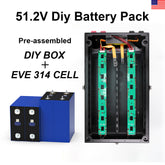

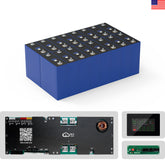

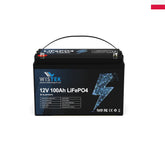
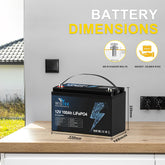

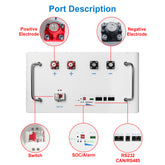
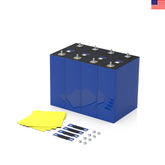
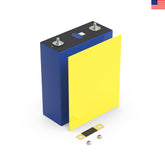
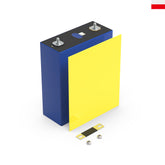

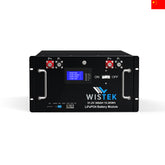
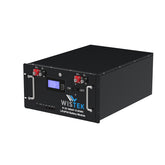
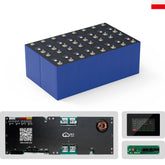








Leave a comment
All blog comments are checked prior to publishing